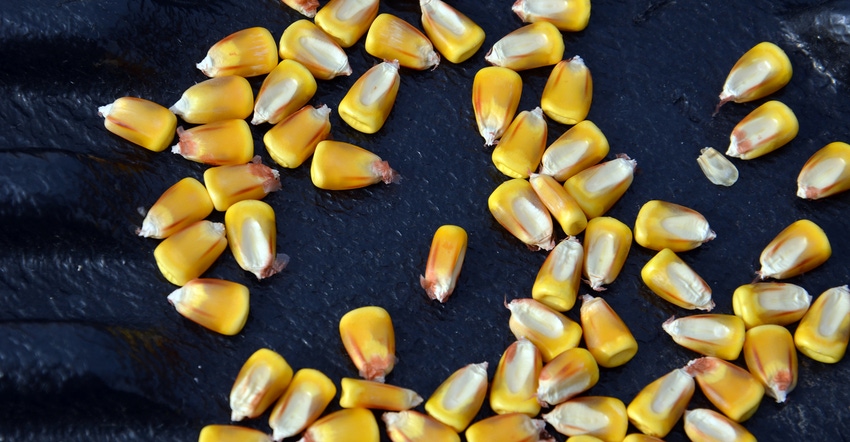
I want to estimate corn yields. I use the standard formula, but how do I know whether to use 75, 85, or 90 or higher? Does it have something to do with kernel size?
Someone asks this question every year. The Indiana certified crop adviser panel providing answers includes: Traci Bultemeier, DuPont Pioneer account manager, Fort Wayne; Gene Flaningam, Flaningam Ag Consulting, Vincennes; and Bryan Overstreet, Purdue University Extension educator, Jasper County.
Bultemeier: Bob Nielsen, Purdue Extension corn specialist, states these numbers are simply “fudge factors,” and this number is a reflection of kernel weight, not size. Just because kernels are large doesn’t mean they have a heavy test weight. Nielsen recommends making your calculations three times for each set of data, using each fudge factor. This will give you a yield range that allows for variability in test weight of the kernels.
While it’s important to estimate yields to know what you will have, be cautious. This calculation is only an estimate of yield. Wild swings in final harvest can result due to variability in the field. This year variability is certainly great in most fields, whether from stand loss or replant. Getting a good estimate of yield will require walking and gathering more data points across the field. Getting a bird’s-eye view with a drone would likely assist in locating those questionable areas.
Flaningam: Kernel size will vary depending upon hybrid and weather conditions during grain fill. Consult with your seed company on the specific hybrid you are estimating yields on. Poor growing conditions will make smaller kernels. Use a higher number like 90 for these conditions. During good growing conditions, a larger kernel can be expected. This will give you fewer kernels in each bushel of corn. Use a smaller factor such as 75 or 80 for these types of conditions.
Overstreet: The formula is to multiply the number of ears in 1/1000 of an acre by the average kernels per ear. Divide that total by the factor, which is what your question is about. This factor is based on the number of seeds in a 56-pound bushel of corn.
For example, if there are 85,000 kernels in a bushel, you would use the factor 85. Generally in the Midwest, the kernel range is from 75,000 to 90,000 kernels per bushel. This number can be influenced by the hybrid, weather, disease and several other factors. You may check with your seed dealer and see if there is historical information on your hybrid’s kernel size. For more information on this method, read this article from Purdue.
How ‘fudge factor’ affects yield estimates
This example illustrates how kernel size and weight, and therefore which “fudge factor” you select, can influence yield estimates.
• Dry during grain fill — use 90. You find an average of 30,000 ears per acre with 18 rows per ear and 38 kernels per row. The math: 30 x (16 x 34) = 16,320 / 90 = 181.3 bushels per acre.
• Average grain fill period — use 80. The math: 30 x (16 x 34) = 16,320 / 80 = 204 bushels per acre.
• Excellent grain fill weather — use 75. The math: 30 x (16 x 34) = 16,320 / 75 = 217.6 bushels per acre.
The estimated yield range is 181 to 218 bushels per acre, depending upon kernel weight.
About the Author(s)
You May Also Like




